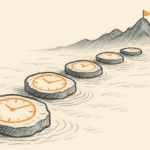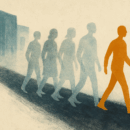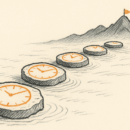Today’s hit product may be in tomorrow’s junkyard
“One of the odd questions I keep being asked about the iPad is “Where do you plug in USB stuff?” It’s a sister phrase to the weird criticism oft thrust at Apple’s device, “Ah, it’s too limiting for me: I can’t plug in USB sticks.” This is weird because other makers, notably Apple’s biggest competitor, Samsung, follow the same proprietary connector path and because I’ve never once thought about plugging a stick into the iPad. Maybe, soon, most people won’t think like this either–because the USB memory stick is very swiftly about to be obsolete.”
KIT EATON, Fast Company (February 14, 2012)
How fast are products changing these days?
Almost exactly 10 years ago, I remember being “wowed” by my first ever USB memory stick. It had just 256 Mb of memory, but I recall feeling the elation: a tiny pocket-sized device? On which you can carry your most important files? And share easily by simply plugging into any computer? Joy. At least it was then.
Since then that same gadget has barely changed, but the world around it certainly has. The memory stick has become smaller in size, larger in capacity and hugely cheaper than it was. It is also ubiquitous, and any one stick is largely the same as any other. In other words, it’s a commodity. Many people don’t even buy them anymore – they get given them as freebies at corporate events.
What killed the USB drive? Cloud computing. There are now very user-friendly and very cheap (often free) cloud memory products available that allow you to store files with one click on one device, and retrieve them with one more click on another. As these products approach tipping point, many savvy users are replacing all their portable and backup drives with a cloud account.
Just two years ago, I was in the market for a recordable DVD player. They had just been released then, and to me they felt rather useful. I procrastinated, though: the early players lacked features and were very expensive for what they offered. The other day I thought I should just go and buy one regardless. Guess what? You can barely find them any more in this country. It turns out there isn’t much of a market for people wanting to record things on discs any more. Why should there be, when TV sets, satellite decoders and set-top boxes come with hard drives on which you can store your programmes? And when content is more easily shared via iTunes and cloud systems rather than physical devices?
These days, something can be excitingly cutting-edge one year, and boringly redundant the next. Palm devices (remember them?) were the switched-on executive’s gadget of choice not so long ago. Now they don’t exist. Meanwhile, the Flip video camera took the US and Europe by storm – and died before it even reached Africa.
If you’re a business person in this world, you have to be very, very alert. Today’s winner is easily tomorrow’s also-ran. Your much-applauded product can either end up irrelevant (like the Palm personal organizer or the Flip camera); or can end up so popular and so easy to produce that it becomes a commodity (like the average DVD player, which is now sold in supermarkets alongside the vegetables).
A tendency to rest on your laurels is the attribute least useful in this new world. Do you have a hit product? You haven’t achieved anything yet. Start examining it, reworking it, rethinking it – even as it’s top of the pile. As Howard Ruff pointed out, Noah didn’t build the Ark when it was already raining. There’s plenty of rain visible on the strategic horizon for everyone, so make your preparations now.
Meanwhile, as Kit Eaton advised in the excerpt, don’t be one of those people who still wonder why iPads don’t have USB drives…

Buy Sunny Bindra's new book
The X in CX
here »
Popular Posts
- Where are you rushing to—your funeral?June 29, 2025
- How to spot a real thinkerJune 15, 2025
- The map will appear—once you start walking.July 6, 2025
- Built the app, forgot the flowJune 22, 2025















